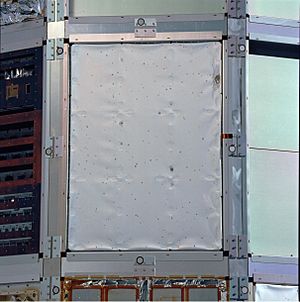Roy J. Plunkett facts for kids
Quick facts for kids
Roy Joseph Plunkett
|
|
|---|---|
| Born | June 26, 1910 New Carlisle, Ohio, United States
|
| Died | May 12, 1994 (aged 83) Corpus Christi, Texas, United States
|
| Nationality | American |
| Alma mater | Manchester University (Indiana) Ohio State University |
| Known for | Teflon |
| Scientific career | |
| Fields | Organic chemistry |
| Institutions | DuPont |
Roy J. Plunkett (born June 26, 1910 – died May 12, 1994) was an American chemist. He is famous for discovering polytetrafluoroethylene, also known as Teflon, in 1938. This amazing material is now used in many everyday products.
Contents
Early Life and Schooling
Roy Plunkett was born in New Carlisle, Ohio. He went to Newton High School in Pleasant Hill, Ohio.
He earned his first degree in chemistry in 1932. This was from Manchester University. Later, he received his Ph.D. in chemistry in 1936. He got this advanced degree from Ohio State University.
Discovering Teflon
In 1936, Roy Plunkett started working as a research chemist. He joined a company called E.I. du Pont de Nemours and Company. He worked at their Jackson Laboratory in Deepwater, New Jersey.
The discovery of Teflon was quite an accident! Roy Plunkett himself told the story:
On the morning of April 6, 1938, Jack Rebok, my assistant, selected one of the TFE cylinders that we had been using the previous day and set up the apparatus ready to go. When he opened the valve — to let the TFE gas flow under its own pressure from the cylinder — nothing happened...We were in a quandary. I couldn't think of anything else to do under the circumstances, so we unscrewed the valve from the cylinder. By this time it was pretty clear that there wasn't any gas left. I carefully tipped the cylinder upside down, and out came a whitish powder down onto the lab bench. We scraped around some with the wire inside the cylinder...to get some more of the powder. What I got out that way certainly didn't add up, so I knew there must be more, inside. Finally...we decided to cut open the cylinder. When we did, we found more of the powder packed onto the bottom and lower sides of the cylinder.
The gas in the cylinder was tetrafluoroethylene (TFE). It had changed into a new substance. This new substance was polytetrafluoroethylene, or PTFE. It was a waxy, solid material.
Amazing Properties of PTFE
This new material had some incredible properties. It was very resistant to corrosion, meaning it wouldn't rust or break down easily. It also had very low surface friction, making it super slippery. Plus, it could handle high heat without melting.
This accidental discovery changed many things. Roy Plunkett shared the story in 1986. He spoke at a meeting of the American Chemical Society.
Later Career at DuPont
After discovering Teflon, Plunkett continued his work at DuPont. From 1939 to 1952, he was the main chemist for making tetraethyllead. This was a special additive for gasoline.
Later, he managed the production of Freon. Freon is a chemical used in refrigerators and air conditioners. Roy Plunkett retired from DuPont in 1975.
Awards and Recognition
Roy Plunkett received many awards for his important discovery.
- In 1951, he was given the John Scott Medal. This award is from the city of Philadelphia. It honors inventions that help "comfort, welfare, and happiness of human kind." People at the award ceremony even got a Teflon-coated muffin tin!
- In 1973, he was added to the Plastics Hall of Fame.
- In 1985, he was inducted into the National Inventors Hall of Fame.
Roy Plunkett passed away from cancer on May 12, 1994. He was 83 years old and living in Texas.
See also
 In Spanish: Roy J. Plunkett para niños
In Spanish: Roy J. Plunkett para niños


